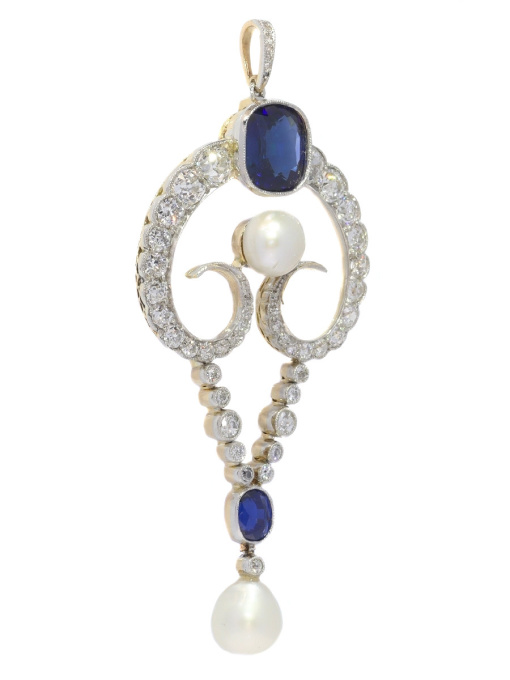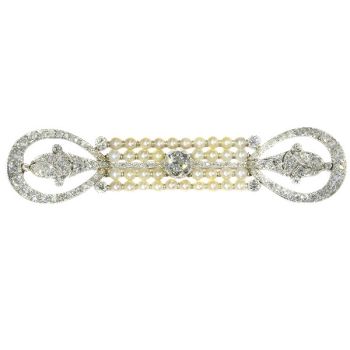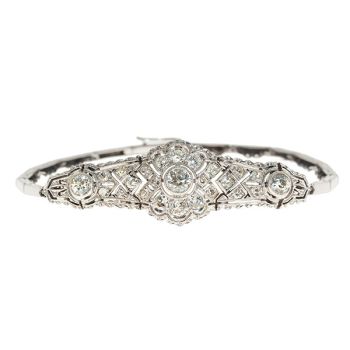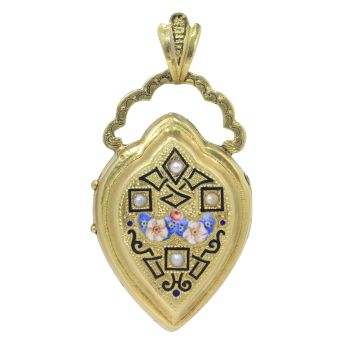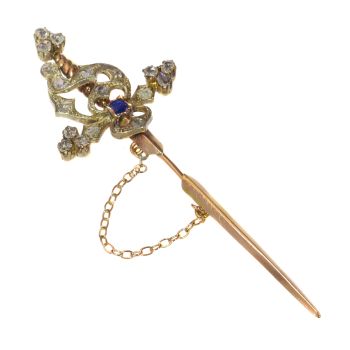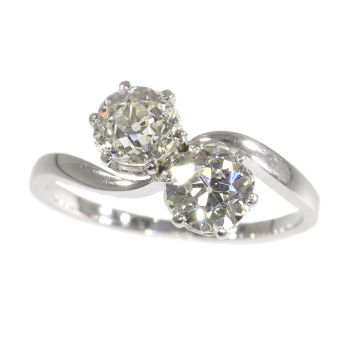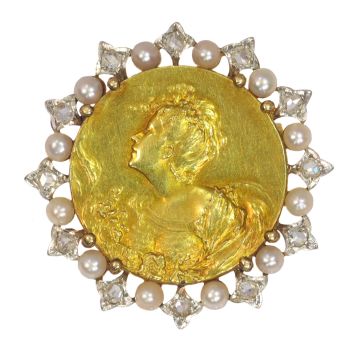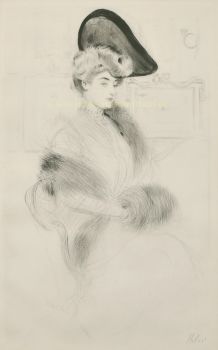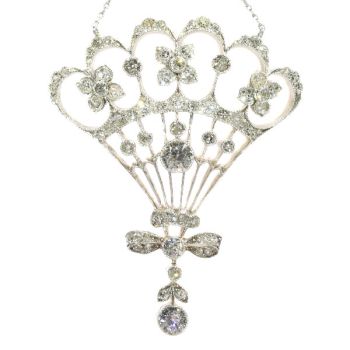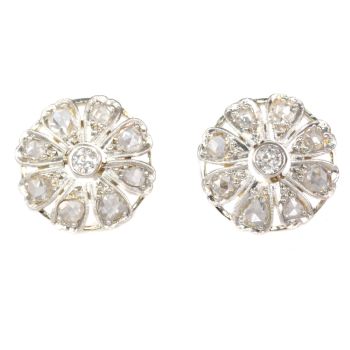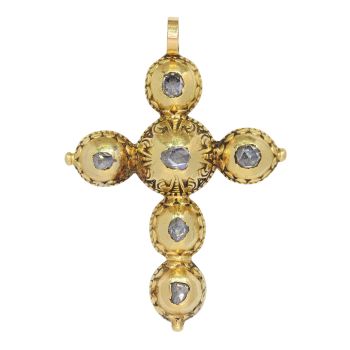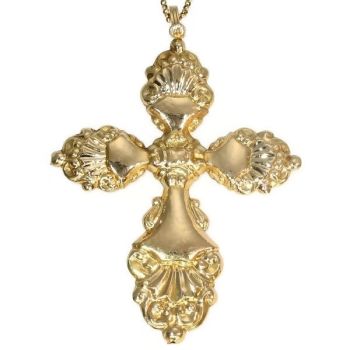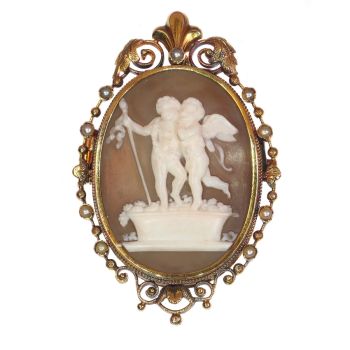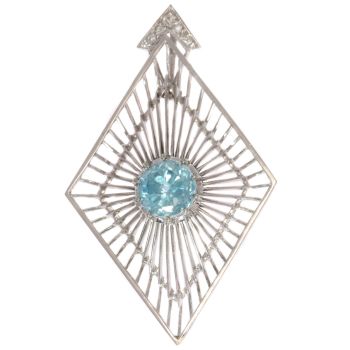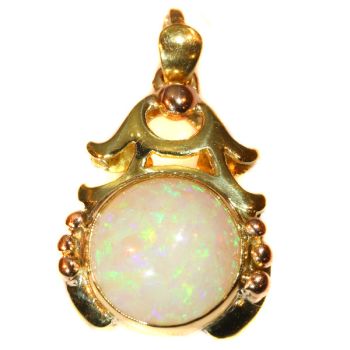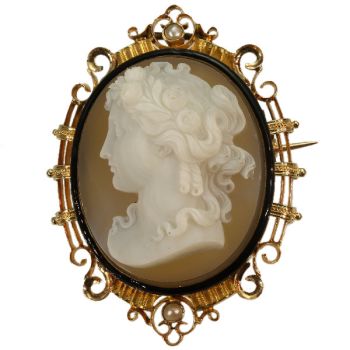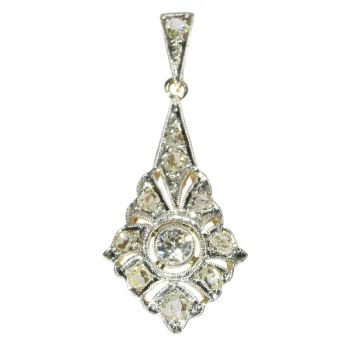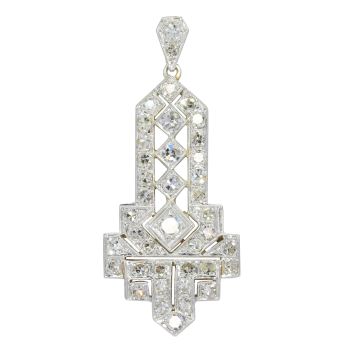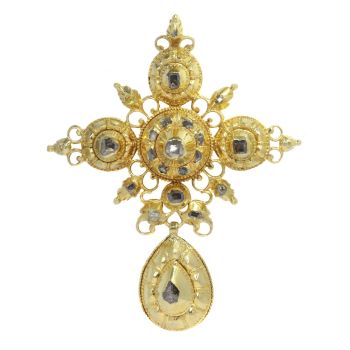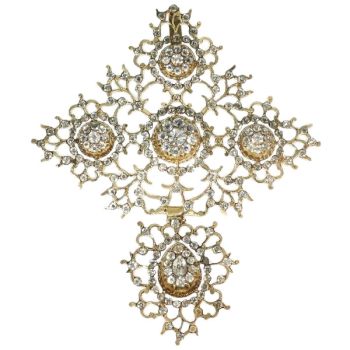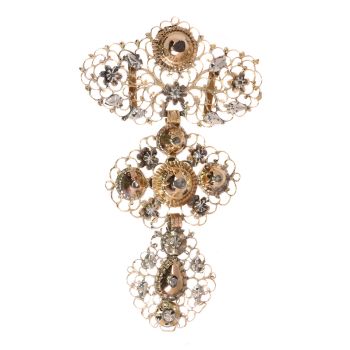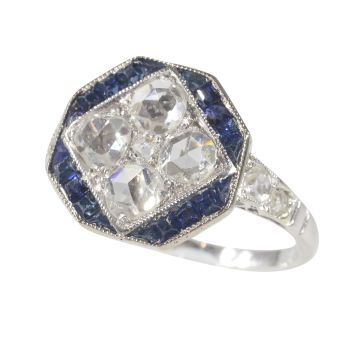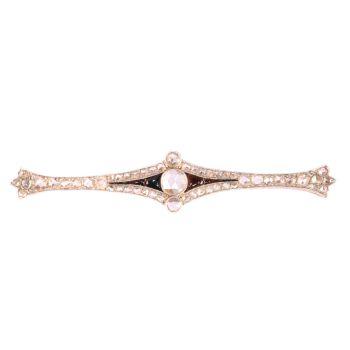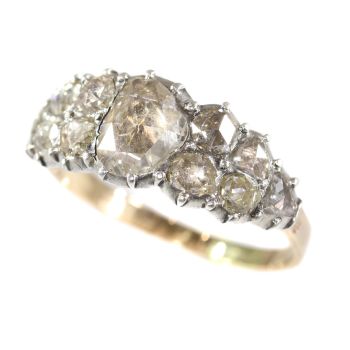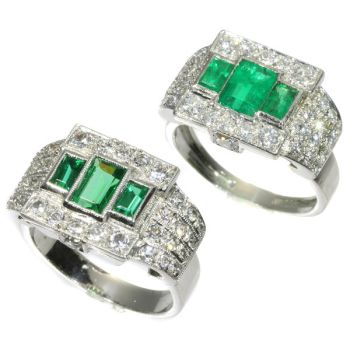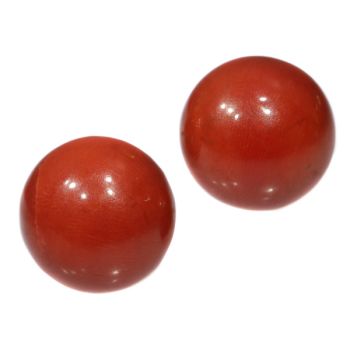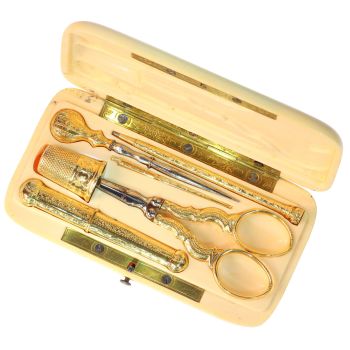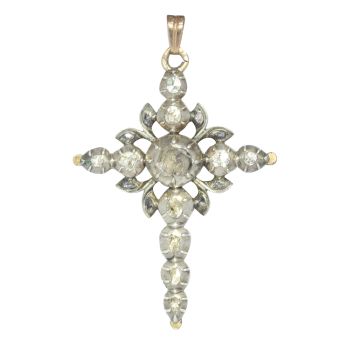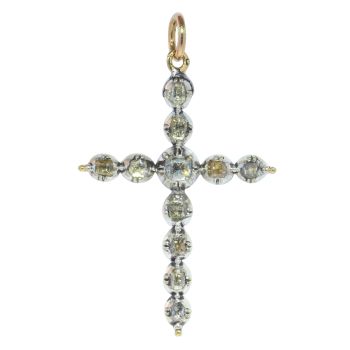Pingente de diamante Belle Epoque com grandes pérolas naturais e safiras naturais de cor azul centáu 1910
Artista Desconocido
DiamantePerlaZafiroPiedra preciosa
€ 37.000
Adin Fine Antique Jewellery
- Sobre la obra de arte
From the central 3.65ct. natural cornflower blue sapphire, two scrolls billowing by diamonds in platinum sprout on an 18K red gold gallery and serve as a pedestal for a rare round natural white pearl. From the scroll coils, two diamond alignments arebound together by another natural cornflower blue sapphire leading up to a dangling diamond topped natural drop shaped pearl.As the four most important gems are accompanied with a certificate, this stylised Belle Epoque diamond garland with a pearl and sapphire heart has proven to turn each day into a fantastic feast.
Antique jewelry object group
pendant
Condition
very good condition
more info on our condition scale
Style
Belle Époque - The Belle Époque (French for "Beautiful Era") was a period in European social history that began during the late 19th century and lasted until World War I. Occurring during the time of the French Third Republic and theGerman Empire, the "Belle Époque" was named in retrospect, when it began to be considered a "golden age" the major powers of Europe, new technologies improved lives and the commercial arts adapted Renaissance and eighteenth-century styles tomodern forms. In the newly rich United States, emerging from the Panic of 1873, the comparable epoch was dubbed the Gilded Age. In the United Kingdom, this epoch overlaps the end of what is called the Victorian Era there and the period named theEdwardian Era.
more info on styles
Style specifics
The Belle Époque (French for "Beautiful Era") was a period in European social history that began during the late 19th century from the Franco-Prussian War (1870-1871) and lasted until World War I (1914-18).
Occurring during the time of the French Third Republic and the German Empire, the "Belle Époque" was named in retrospect, when it began to be considered a "golden age" the major powers of Europe, new technologies improved lives and the commercialarts adapted Renaissance and eighteenth-century styles to modern forms.
In the newly rich United States, emerging from the Panic of 1873, the comparable epoch was dubbed the Gilded Age. In the United Kingdom, this epoch overlaps the end of what is called the Victorian Era there and the period named the Edwardian Era.
In the Belle Époque cheap coal and cheap labour contributed to the cult of the orchid and made possible the perfection of fruits grown under glass, as the apparatus of state dinners extended to the upper classes; champagne was perfected during the Belle Époque. Exotic feathers and furs were more prominently featured in fashion than ever before, as haute couture was invented in Paris, the centre of the Belle Époque, where fashion began to move in a yearly cycle; in Paris restaurantssuch as Maxim's achieved a new splendour and cachet as places for the rich to parade, and the Opéra Garnier devoted enormous spaces to staircases as similar show places.
After mid-century, railways linked all the major cities of Europe to spa towns like Biarritz and Deauville; their carriages were rigorously divided into first-class and second-class, but the super-rich now began to commission private railway coaches, asexclusivity was a hallmark of opulent luxury. Bohemian lifestyles gained a different glamour, pursued in the cabarets of Montmartre.
Period
ca. 1910
Events & facts of this era, poetry of this era, fashion of this era.
Material
platinum and 18K red gold (touchstone tested)
more info on precious metals
Diamonds
-41 old brilliant cut diamond with an estimated weight of ± 2.59ct colour and clarity F/I, vs/i
-Six rose cut diamonds. We do not have the weight of the diamonds which is normal in our trade when it comes to rose cuts.
All diamond weights, color grades and clarity are approximate since stones are not removed from their mounts to preserve the integrity of the setting.
All diamonds we offer are screened by www.ijgc-worldwide.com for whether they are natural or synthetic, and all diamonds in this jewel are 100% guaranteed to be natural.
Sapphires
-one cornflower blue natural sapphire weighing 3.65ct.
-one cornflower bluenatural sapphire weighing 1.11ct
(see pictures for the certificates of these sapphires)
Total sapphire weight
4.76 crt
Pearls
-one natural round saltwater pearl weighing 2.59ct.
Colour: white
Dimensions: 7,26 x 7,54 x 6,84 mm
(see pictures for the certificate of this pearl)
-onenatural drop shaped saltwater pearl weighing 3.86ct.
Colour: white
Dimensions: 8,02 x 8,22 x 8,80 mm
(see pictures for the certificate of this pearl)
Total pearl weight
6.45 crt (= 27.11 chow)
Birthstones
Diamond is the birthstone (or month stone) for April, pearl for June and sapphire for September.
more info on birthstones
Hallmarks
No trace.
more info on hallmarks
Dimensions
Height 7,10 cm (2,80 inch)
see picture with a ruler in millimeters and inches
Weight
11,10 gram (7,14 dwt)
Adin Reference Nº
21116-0169
Copyright photography
Adin, fine antique jewellery
Additional information
our latest acquisitions
jewelry glossary
wall of fame
visit us in Antwerp
subscribe to our mailinglist
- Sobre el artista
Puede suceder que un artista o creador sea desconocido.
Algunas obras no deben determinarse por quién está hecho o por (un grupo de) artesanos. Algunos ejemplos son estatuas de la Antigüedad, muebles, espejos o firmas que no son claras o legibles, pero también algunas obras no están firmadas en absoluto.
También puedes encontrar la siguiente descripción:
•"Atribuido a …." En su opinión, probablemente una obra del artista, al menos en parte.
•“Estudio de….” o “Taller de” En su opinión, una obra ejecutada en el estudio o taller del artista, posiblemente bajo su supervisión
•“Círculo de…” En su opinión, una obra del período del artista que muestra su influencia, estrechamente asociado con el artista pero no necesariamente su alumno.
•"Estilo de …." o “Seguidor de…”. En su opinión, una obra ejecutada al estilo del artista pero no necesariamente por un alumno; puede ser contemporáneo o casi contemporáneo
•"Manera de …." En su opinión una obra al estilo del artista pero de fecha posterior
•"Después …." En su opinión, una copia (de cualquier fecha) de una obra del artista
•“Firmado…”, “Fechado…” o “Inscrito” En su opinión, la obra ha sido firmada/fechada/inscrita por el artista. La adición de un signo de interrogación indica un elemento de duda.
•“Con firma…”, “Con fecha…”, “Con inscripción…” o “Lleva firma/fecha/inscripción” en su opinión la firma/fecha/inscripción ha sido añadida por alguien que no es el artista
¿Está interesado en comprar esta obra de arte?
Artwork details
Related artworks
Artiste Inconnu
Bague édouardienne avec saphir à changement de couleur1910 - 1920
Prix sur demandeAns Hemke-Kuilboer Juwelier & Antiquair
1 - 4 / 12- 1 - 4 / 24
- 1 - 4 / 24
- 1 - 4 / 24
- 1 - 4 / 12





